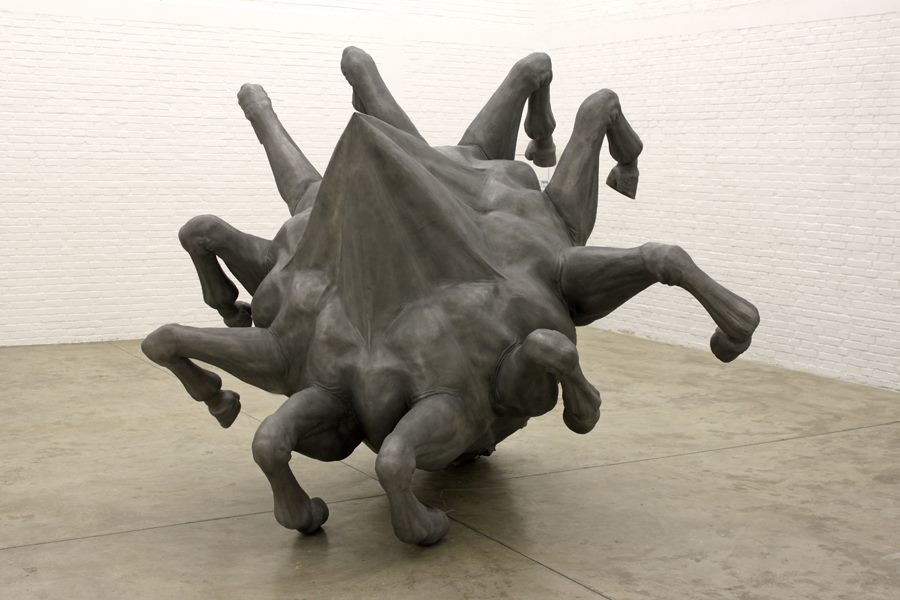Disconnect
Female narcissism obviously is a misogynistic concept. “Being a feminist is about defeating, fighting those ideas. But actually, what a lot of gender studies has been about is looking into what’s masculine, figuring out what masculinity is, and how to conform to it maybe. Feminism’s ideal is a middle class white butch. ‘Don’t do feminine things.’ This excludes so many ethnicities, and models of femininity,” says Uddenberg. Her sculptures currently on view at the 9th Berlin Biennale explicitly do not follow this doctrine. Their stylized bodies are caricatures of what a “woman” “looks like,” yet their hyper-femme physique, positioning and accessories capture something about the way we look at ourselves. They are both object and subject. They turn you on, yet they repulse you. Their agency is palpable, but their intentions are intangible. “I’m also very alienated from femininity,” says Uddenberg.




